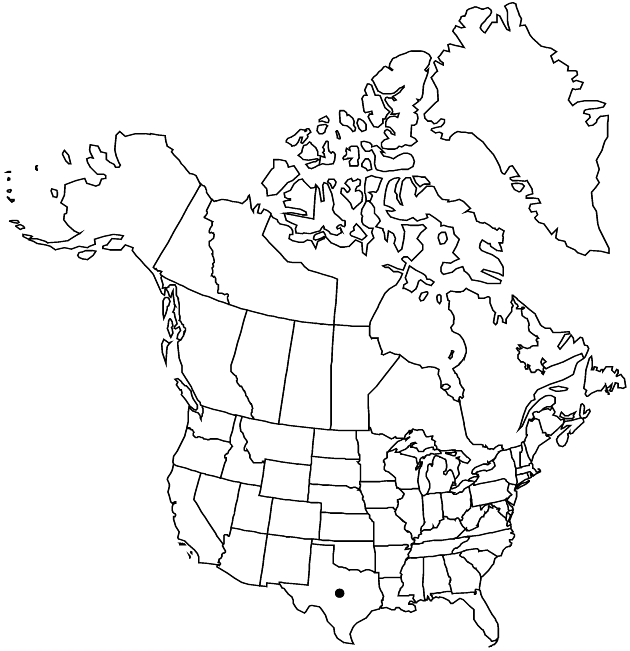Perityle fosteri
Madroño 30: 217, fig. 1. 1983.
Common names: Foster’s rock daisy
EndemicConservation concern
Revision as of 20:14, 5 November 2020 by imported>Volume Importer
Plants 6–15 cm (forming mats on rock faces, profusely branched, leafy); short-hairy. Leaves: petioles 4–8 mm; blades ± ovate to deltate overall, 5–12 × 5–12 mm, 3-lobed, ultimate margins entire. Heads borne singly or in corymbiform arrays, 6–7 × ca. 4 mm. Peduncles 2–5 mm. Involucres funnelform-cylindric. Phyllaries ca. 8, linear-lanceolate, 5–6 × 0.8–1.3 mm. Disc florets ca. 10; corollas cream to pale yellow, tubes 1 mm, throats tubular-funnelform, 3 mm, lobes 0.5 mm. Cypselae 1.5–1.6 mm; pappi of ca. 20 bristles 1–2 mm. 2n = 34.
Phenology: Flowering spring–fall.
Habitat: Rock faces in protected canyons
Elevation: 1500–1660 m
Discussion
Of conservation concern.
Perityle fosteri, possibly a close relative of P. rupestris, is known only from Culberson County.
Selected References
None.
Lower Taxa
None.
